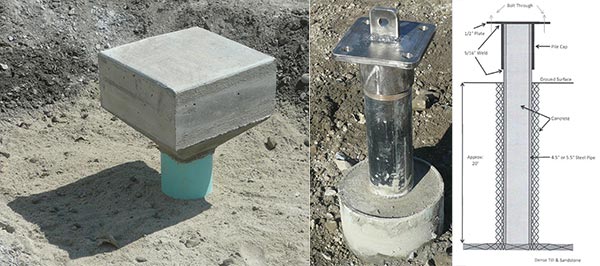It’s been a long time coming.
More than 50 years passed before sonic drilling came full circle — back to one of its earliest uses as a pile driver. Today, the technology is far superior and set to revolutionize the piling industry with a just-patented method.
But, first, a little history on how we got here. Back in the 1960s, an early sonic pile driving rig enjoyed a small measure of success using two WWII army tank engines that generated a whopping 1,000 horsepower. But, despite much effort and a fair bit of money, by the 1980s, sonic pile driving research had fizzled out with little to show for 20 years of effort.
That’s about the time that Ray Roussy, a Canadian engineer, entered the picture. His work on sonic drilling had suddenly ended when his employer, Hawker Siddeley, a British aerospace company, decided to abandon sonic research.
Roussy was convinced the technology was viable — not so much as a pile driver but, instead, as a drilling rig that could offer faster speeds. In this application, sonic also offered the much-appreciated ability to drill through mixed soils where other rigs would jam up. He decided to continue the research, but on his own and with no financing. It was not an easy road but, with perseverance, Roussy patented and successfully commercialized modern sonic drilling technology as we know it today.
After 35 years of effort, Roussy’s four-time award-winning patented technology is now used in almost all drilling applications and around the world on six continents. Drilling three to five times faster through mixed soils, using no drilling mud (so less mess to clean up) and able to provide continuous core samples, sonic drilling technology has been embraced by many industries, including mining, geothermal and environmental.
Why Sonic for Pile Driving?
Working or living near a construction site can generate more than a few headaches, but none worse than listening to piles driven into the ground. The repetitive percussions and thumping ground vibrations are enough to make most people reach for the nearest bottle of painkillers. Despite the headache factor, though, piles are integral to the foundation of any building.
Thanks to continued research, three sonic pile installation options are now available — a development that had been anticipated for nearly a year but was kept secret until patents could be filed.
“It’s been a time-consuming but exciting project to finally realize the piling installation potential in sonic drilling technology,” Roussy says.
Although Roussy spent the better part of his life and career perfecting his sonic drilling technology, that didn’t stop him from reflecting on its earliest roots in pile driving.
“I always believed the sonic drill would, one day, find its original niche again in building foundations,” he says.
Roussy, who is president of the Sonic Drill Corporation (which manufactures his patented sonic drill rigs) and Sonic Drilling Ltd. (which owns a fleet of sonic rigs used for contracting), first used the newly-patented pile-anchor method on his own offices for Sonic Drilling Ltd.
“One of the main advantages of using a sonic to install pile-anchors is that it can be done efficiently, with no pounding, in tight spaces and without impacting adjacent structures,” he says. “Plus, on larger piling installations, there’s no need for cranes or heavy equipment, while smaller projects can be quickly and easily completed. … Lots of opportunity to save on costs.”
Sonic pile-anchors also provide exceptional earthquake protection by preventing the building from shifting or separating from its foundation — a significant cause of damage and death in seismic shake-ups and building collapses.
Only sonic rigs produced by the Sonic Drill Corporation can use this new method, which offers three patented options, as shown below.

Coming full circle, Roussy’s patented pile options are well-suited for projects such as low-rise commercial buildings, warehouses and residential developments. With the sonic rig’s smaller size option, lighter weight and truck-mounted or crawler versatility, it offers many economical benefits as well.
Another use for the sonic drill is the installation of micropiles, either by vibrating the piles directly into the ground or by drilling first and casing through any difficult material followed by a micropile inserted inside the casing.
In any case, for workers and residents alike, there’s one important benefit: no rush for painkillers. Instead of the incessant pounding of a pile driver, there is only the quiet hum of a sonic rig in action.



Report Abusive Comment